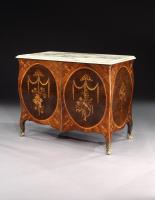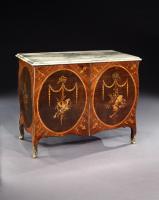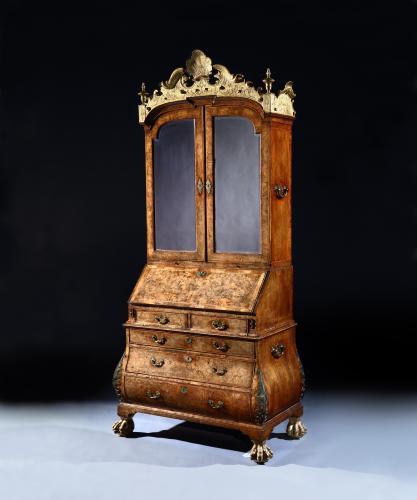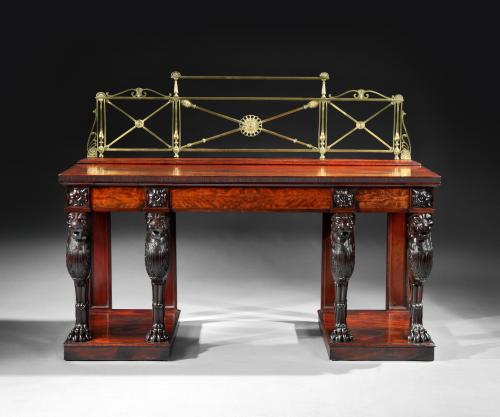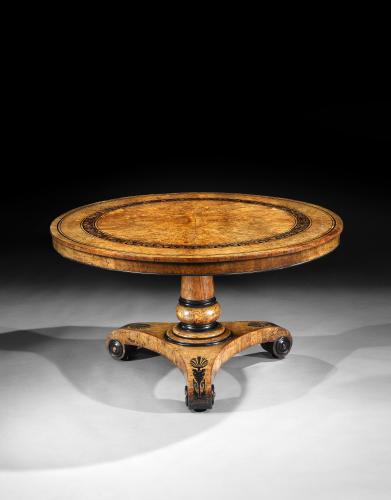

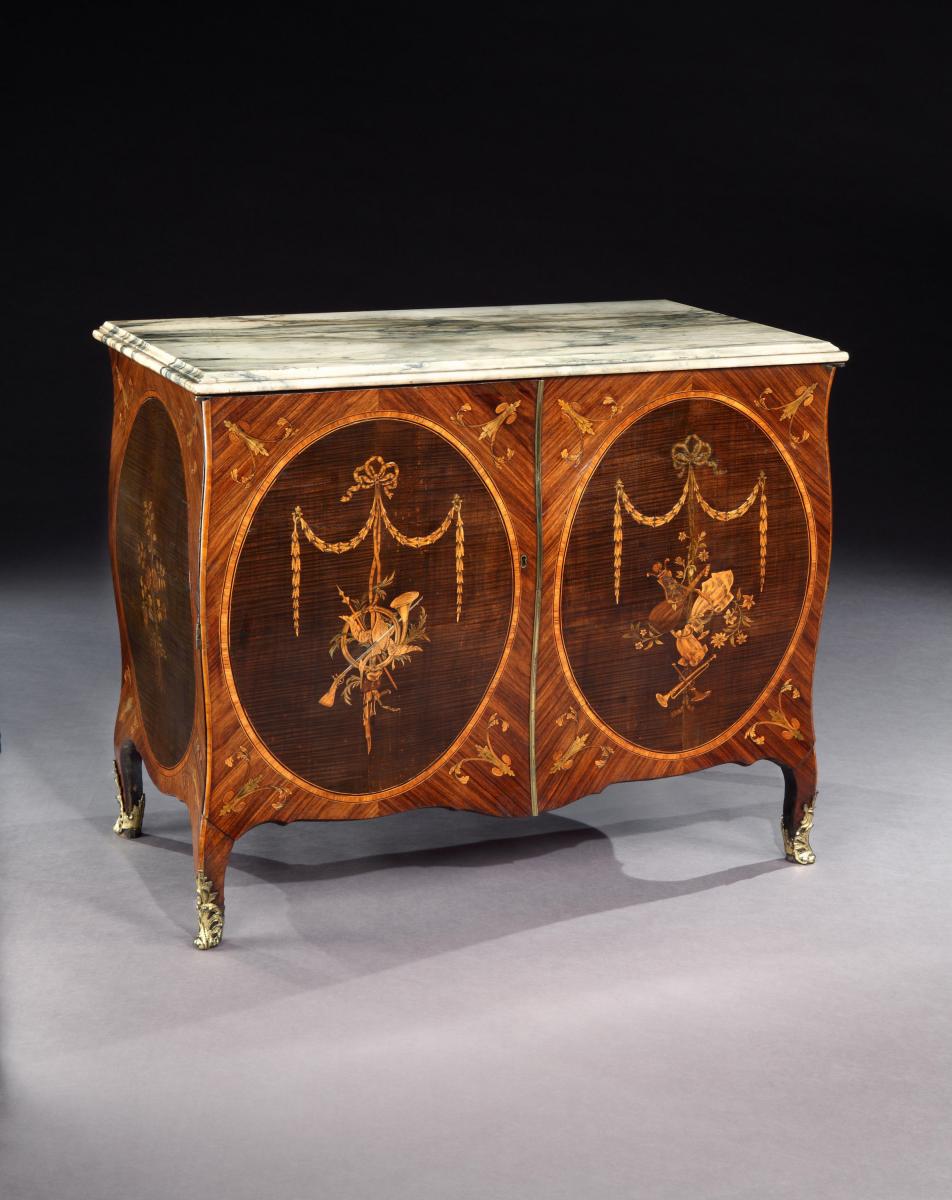
Price on application
This object is eligible for a Certificate of BADA Provenance
The BADA Standard
- Since 1918, BADA has been the leading association for the antiques and fine art trade
- Members are elected for their knowledge, integrity and quality of stock
- Our clients are protected by BADA’s code of conduct
- Our dealers’ membership is reviewed and renewed annually
- Bada.org is a non-profit site: clients deal directly with members and they pay no hidden fees
An Exceptional Pair of George III Marquetry Bombe Commodes, attributed to Mayhew and Ince, English circa 1770.
The marble tops with moulded edge above a pair of doors veneered in quartered padouk with oval panels of harewood with finely detailed marquetry of musical instruments and hunting trophies suspended from ribbons and swags of husks; the sides similarly decorated with panels of floral marquetry within oval panels; the serpentine apron terminating in ormolu mounted feet.
Provenance: Wateringbury Place Kent.
This pair of serpentine ormolu mounted and marble-topped cabinets with their inlaid oval medallions are designed in the 1770s 'antique' style after the French manner. Floral bouquets decorate the side medallions while flower-wreathed pastoral trophies are suspended within ribbon-tied festoons of laurel.
A trophy of musical instruments is accompanied by a love-trophy of Cupid's weapons on one cabinet, while its companion features sporting weapons derived from Attributs de Chasse, such as P. F. Tardieu engraved after J.-C. de la Fosse (d. 1789; see G. de Bellaigue, ‘18th Century French Furniture and its debt to the Engraver’, Apollo, January 1963, p. 18, fig. 6).
Very similar ribbon-tied musical trophies appear on a commode in the Victoria and Albert Museum (W.88-1924) and would probably have been based on the same contemporary printed designs; as well as on the Chesterfield Commode - attributed to Mayhew and Ince and almost certainly supplied to Philip Stanhope 5th Earl of Chesterfield K.G. (1755-1815) for Chesterfield House, London.
A trophy of garden implements in a similar style appears on a commode formerly in the Mount Trust collection, as well as on the commode from the collection of the Earls of Shaftesbury at St. Giles’s House, now in the Metropolitan Museum, New York, and illustrated in A. Coleridge, Chippendale Furniture, London, 1968, pl. 48.
The engraved foliate clasps which ornament the corners of each oval panel also cooer to be a motif employed by Mayhew and Ince. They appear, along with foliate tendrils similar to those on the sides of this paid of commodes, at the front corners of the top of the serpentine commodes previously in the collections of Sir Anthony de Rothschild at Aston Clinton, Buckinghamshire, Viscount Leverhulme at the Hill, Hampstead, and latterly Sir Michael which has been attributed to Mayhew and Ince.
The BADA Standard
- Since 1918, BADA has been the leading association for the antiques and fine art trade
- Members are elected for their knowledge, integrity and quality of stock
- Our clients are protected by BADA’s code of conduct
- Our dealers’ membership is reviewed and renewed annually
- Bada.org is a non-profit site: clients deal directly with members and they pay no hidden fees


